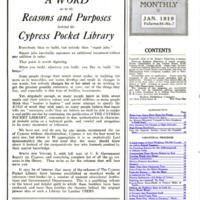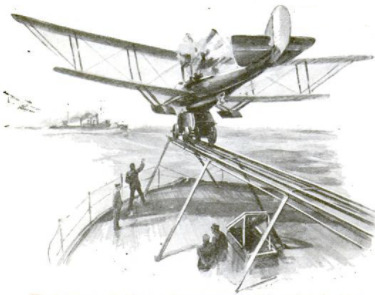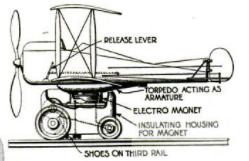An electro-magnetic catapult designed to facilitate the take-off of airplanes
Item
-
Title (Dublin Core)
-
An electro-magnetic catapult designed to facilitate the take-off of airplanes
-
Article Title and/or Image Caption (Dublin Core)
-
An Electro-Magnetic Catapult to Give Airplanes a Good Start
-
extracted text (Extract Text)
-
IF an airplane is shot from a catapult instead of starting
entirely by its own power, not only can it be started flying
‘more rapidly and in a smaller space, but it can be made to
carry nearly ten times more load. And if the catapult
is built on the electro-magnetic plan it can be nade to serve
for airplanes of different design
and size, including hydro-air-
planes. These are the ideas that
prompted Godfrey Lowell Cabot,
of Boston, to design and patent a
launching mechanism of the kind
‘mentioned.
The catapult takes the form of
an electrically driven carriage re-
ceiving current from the rails on
which the wheels travel, and com-
pleting the cireuit by means of a
‘third rail between them. A brush
attached to one wheel axle takes
current to a motor geared to the
front wheels, and also, by another
wire, to the electro-magnet. The
second binding-posts are secured
to Sion contacting with the third
The third rail does not begin at
the starting end of the track,
but a little farther on, the
idea being that the carriage
and aireraft shall first be set
going by the propeller screw,
to make sure of the engine
being in order. The car-
riage and aireraft are hurled
forward together, and a
speed is soon provided at
which the aircraft is sure to
fly.
An indicator shows the
aviator when that moment
has arrived, and he signals
to the operator of the launching
machine, who at once cuts off the
current by means of the rheostat-
controller. The magnet lets go, and
the aircraft sails into the atmos-
phere.
The carriage is brought to a stop
by automatic brakes.
-
Language (Dublin Core)
-
eng
-
Date Issued (Dublin Core)
-
1919-01
-
pages (Bibliographic Ontology)
-
54
-
Rights (Dublin Core)
-
Public domain (Google digitized)
-
Archived by (Dublin Core)
-
Davide Donà
-
Marco Bortolami (editor)
 Popular Science Monthly, v. 94, n. 1, 1919
Popular Science Monthly, v. 94, n. 1, 1919




